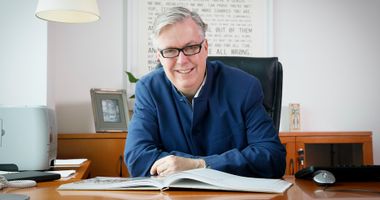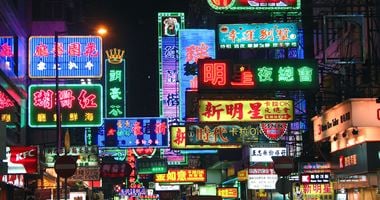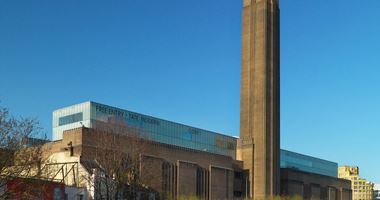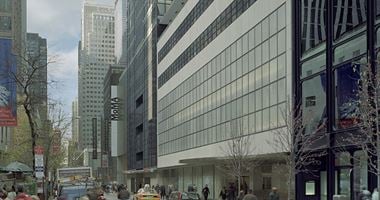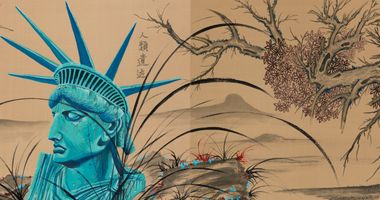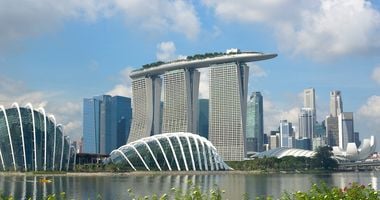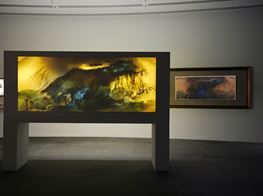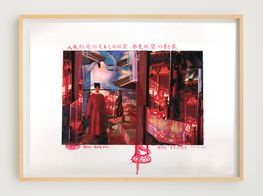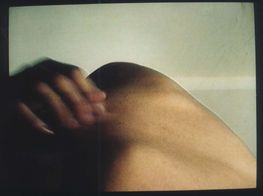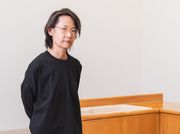Melissa Chiu
Photo by Ashley Gilbertson
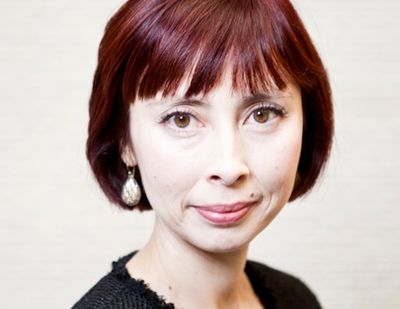
Photo by Ashley Gilbertson
Melissa Chiu is the Museum Director of Asia Society in New York and Senior Vice President for Global Arts and Cultural Programs. As a leading authority and author on Asian contemporary art, she has led a number of major initiatives at Asia Society including the launch in 2007 of a contemporary art collection, and she is now overseeing the Arts & Museum Summit initiative.
In the hour before her introduction address, Ocula met with Melissa Chiu to discuss the aspirations of the inaugural Summit, her views on what the museum model might be for the 21st century and Asia Society's role in supporting the widespread growth of museums in Asia.
Asia Society recently played host to some of the most significant institutional figures in the art world, including Glenn D. Lowry (Director of The MoMA New York), Caroline Collier (Director, Tate Modern), Yuko Hasegawa (Chief Curator, Museum of Contemporary Art, Tokyo) and Lars Nittve (Executive Director, M+, Hong Kong).
These figures along with a number of other art luminaries were gathered in Hong Kong for the Arts & Museum Summit held by the Asia Society at their Hong Kong Center. The Arts & Museum Summit is a milestone in Asia Society's initiative to create a network of individuals and museums willing to share collections and ideas about art and museums, and arrives at a time when museum development is rapidly on the rise in Asia.
Bringing together some of the world's foremost directors and curators from the museum world, the Summit provides an opportunity to focus on issues such as what a museum of today should look like, what kinds of exhibitions create new thinking about art history, and how museum spaces can be activated for audiences through technology.
The inaugural Arts & Museums Summit is the result of a renewed focus by the Asia Society on museum exchange between countries and the establishment of an Arts & Museum Network a year ago. Can you tell me about the thinking behind this?
The idea behind wanting to establish a Network is that most of the museum growth in the next 10 years will be here in Asia. In China they have slated about 3,000 new museums. So we are thinking about that and the fact that historically most museums in the U.S. were established in the 20th century, and before that the 18th and 19th centuries saw the transition from court and royal collections into public institutions in Europe.
I think that the Internet can play a role in opening up the conversation about a collection or art in a way that the actual physical visit perhaps doesn't.
With this is a sense of momentum in Asia towards the establishment of new museums and a newfound sense of cultural awareness in many places across the region. I think there's a real opportunity, a moment to connect those interested in culture, whether they be artists, collectors, or museum professionals —people-to-people connections — in a way that goes above and beyond what we might do for our usual exhibitions. We're thinking about new ways to connect people to art, and that's essentially the driving impulse behind the Network.
The Summit that we have here in Hong Kong beginning today is really about opening up the conversations around museums and art. What could a museum be in the 21st century, given that there will be a whole lot of new museums beings established? I for one think the moment is right to think about new models. We don't necessarily want to replicate the legacies of European or American museums but think about something that is for Asia — a local context.
JRRecognising that the majority of new museums will be constructed in Asia over coming decades, and that this Summit is about discussing what is relevant for this region and era, what is your own view on this? How do you see the museum model evolving over coming years?
MCWell I think it's as much about looking at new ideas and innovations as understanding the legacy or modes of working that have been replicated across the field that may not be relevant today. So it's both looking at what we do now with a very critical eye as well as coming up with innovations. One of the key issues is around technology. Museums are about creating a direct encounter with art, yet there are opportunities to introduce new technologies, to open it up to new audiences online or virtually but also to think about how technology can augment the experience in different ways.
There's a lot still to be done in terms of how to make new technology viable in a museum context and that's probably as much about tech innovations and smartphones as anything else. Then there are many other things that I hope our speakers we've invited to be here with us in the next couple of days are also able to articulate — what for their institutions are both the opportunities and challenges that lie ahead.
In the long term, we would like there to be many more connections across museums with the idea of established museums working with newly emergent museums.
JRA direct encounter with art is obviously quite different to an online or digital experience. How do you see the Internet specifically playing a role with the enhancement of museums?
MCI think that the main issue museums are grappling with now is the fact that their virtual audience is so much greater than their actual visitorship. And whether this needs to be reconciled or whether you say 'okay, this is another kind of engagement with art that we're going to think about in a different way'.
In the past few years, most museums have made enormous efforts to get their collections online. It's been about giving public access to the collection, because most museums only have about 5 per cent of their actual collections on display. So I think that the Internet can play a role in opening up the conversation about a collection or art in a way that the actual physical visit perhaps doesn't. These are all the very beginnings of broader discussions about how art can have a greater role in people's lives.
JRWhy has Asia Society taken on this role to strengthen the museum exchange between countries, and how does this fit within your broader programme?
MCAsia Society was founded over 50 years ago with the main mission to educate Americans about Asia. The Arts and Museum Network is a recognition that the environment has really changed in this time. Now with a physical presence, a building here in Hong Kong, the dynamic of that model of importing Asian art to the U.S. has changed completely.
In fact what we're looking at is much more of a conversation, one that has parity. It's not just one where American museums are determining the scholarship and discussion on Asian art. The development of new museums here in Asia completely changes the conditions.
I think Asia Society is one of the few organisations that can play a role in determining and assisting in this kind of conversation through our deep connections with museums in Asia, with curators and artists and those who we've been working with for decades, and also our reputation in the United States and beyond. So we're one of the few institutions that are able to convene museum leaders, curators, and artists around this kind of conversation, and I think it's very timely.
We're kind of at this very interesting moment. You can see it. Asia Society is very often ahead of the curve in terms of looking at new ideas and new scholarship. We were the first American museum to do a Chinese contemporary art show over 14 years ago and many other kinds of initiatives, so we see this as a stake in the ground perhaps towards trying to build greater connections across Asia, but also with the United States.
We're one of the few institutions that are able to convene museum leaders, curators, and artists around this kind of conversation, and I think it's very timely.
JRYou have a rare gathering of global museum leaders participating in the Summit. What are your hopes and expectations for the outcomes of this event?
MCThe importance of the Summit is that we have been able to bring museum leaders together from lots of different kinds of institutions to discuss the future potential for museums. One outcome would be to have fostered a conversation that hasn't happened before about museums and new thinking about museums for an Asian environment.
In the long term, we would like there to be many more connections across museums with the idea of established museums working with newly emergent museums. Another outcome of this Summit will be a publication about this very idea of 'making the museum in the 21st century' — a combination of the transcripts from our conversations, and newly commissioned essays.
The Summit is just a step, what we're calling the second phase of the project. The first phase was really established last November when we brought 15 American museum directors to Beijing to develop discussions on collaboration and partnership with museum directors in China. That was a bilateral conversation, and more private.
This Summit is much more of a public conversation and one that we hope will allow more engagement between the speakers and the public throughout Asia The next step for us is really to build an online community through the Summit.
JRYou mentioned 3,000 as the number of upcoming new museums in China — an impressive figure. In what timeframe will these be built?
MCThat's over the next decade and just public sector too; it's not including private institutions. To put it into perspective though too — there are about 17,500 museums in the United States, but that includes museums of what I would call live collections, so they often include zoos and botanical gardens. But it is a larger number.
So I think that there's still even room to grow in terms of that 3,000 figure. The most growth is coming from China. Japan has already had a substantial number of new museums in the 1980's that were largely provincial museums, and some private. In India we see some being built, and certainly in Singapore there are a number of new museums that have come online recently. It's across the board; it really is across the region. —[O]



